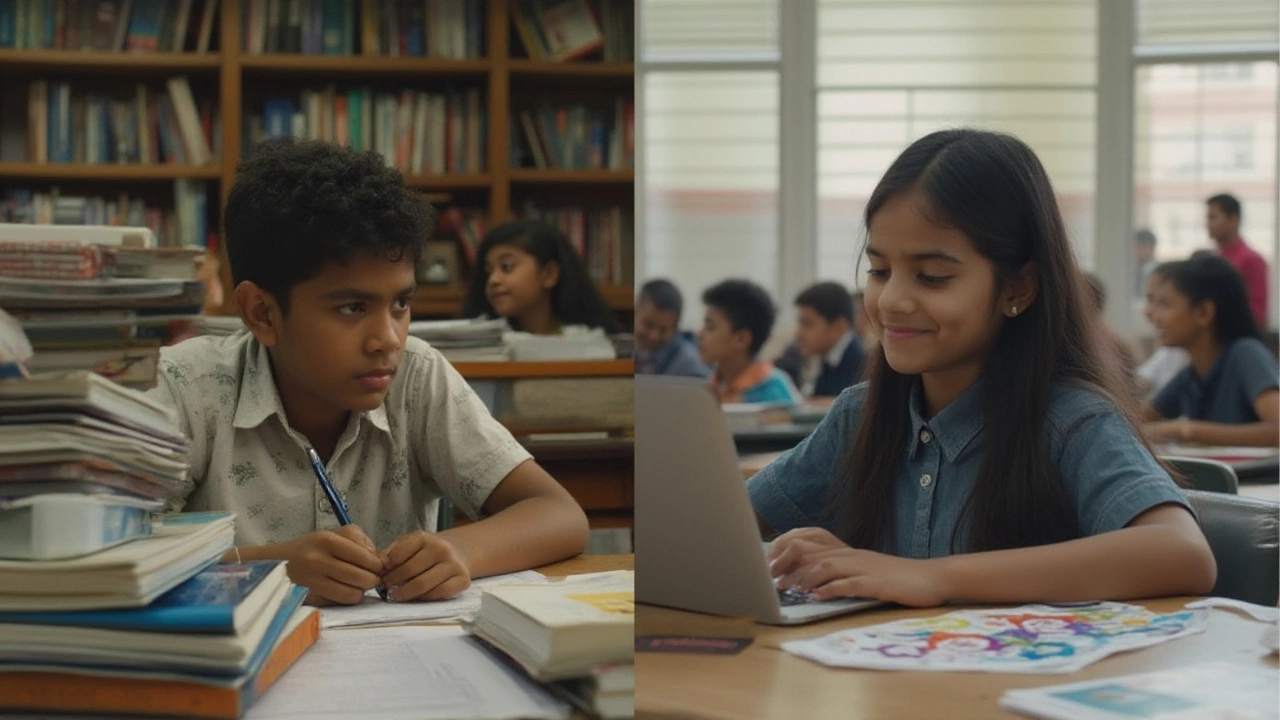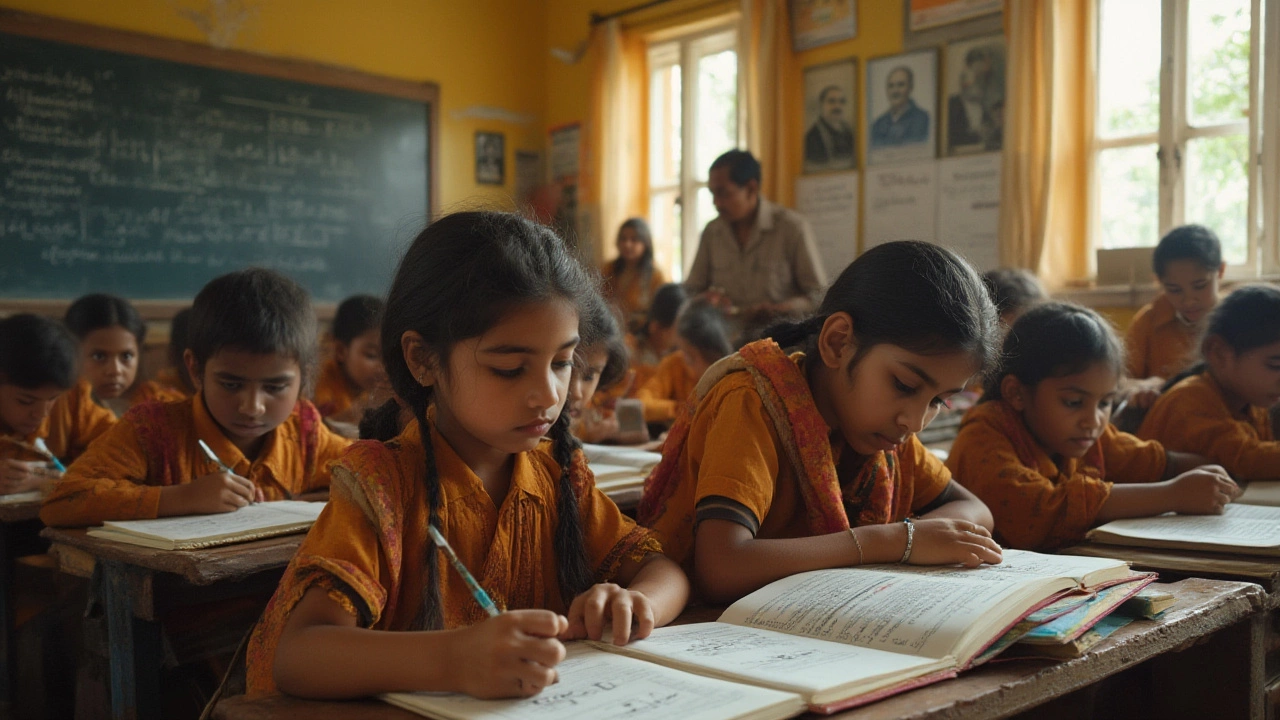You know that feeling when you think you’ve got it rough with school, then someone from halfway across the world goes, “Oh really? Try my syllabus for a day!” The great education debate is a minefield, and nothing sparks it up quite like the age-old question: is the Central Board of Secondary Education (CBSE) in India really tougher than the typical American school system?
This topic isn’t just a favorite for family get-togethers or random Reddit threads—it’s a hot button for expat parents, ambitious teens, and anyone who’s ever had to cram for an exam with an energy drink in hand. Let’s cut through the noise, leave the drama at the door, and really answer this. I’ve talked to students who’ve gone through both, checked what universities ask for, and dug into its hidden pressures. The details might surprise you.
How the Curriculum Structures Differ: Content, Volume, and Style
You might think all schoolwork is the same everywhere—reading, writing, cramming. Not quite. The structure sets the tone for how hard your day will be. In CBSE, everything is mapped out to the last topic. The curriculum is prescribed by a board, subject to updates, but those textbooks (often from NCERT) are the core meal—side dishes are rare. By standard 11 and 12, the science stream alone can mean up to five thick textbooks plus projects, each with their own details, chemical equations, theories, and endless diagrams. There’s not much wiggle room. It’s locked down so everyone is learning the same, being tested on the same.
Switch to the standard American school: the menu is broader, but you get more choices. Students pick from a spread of required and elective classes—AP Calculus, Drama, Forensic Science, and even Culinary Arts. Teachers might pull in extra material, put you in a small group debate, or hand out essays asking what you think. There’s more discussion, less dictation. It's not all open fields though; standardized tests like SATs or ACTs still stalk the final year, and certain states have their own core exams.
When it comes to sheer volume, CBSE tends to front-load information. You memorize a lot. Definitions matter. Miss one, and you lose marks. In American high schools, the focus leans more on application—how you’d use a formula, why you believe something. That doesn’t mean it’s easy. Slide into an AP Biology class and you’ll see kids grinding just as hard, but with more open-ended tasks. One major difference? In CBSE, you’re pretty much locked in by stream from grade 11 onward—science, commerce, arts. That locks your electives too. In the States, there’s more mixing and matching.
It’s not apples to apples, but if you measure by content density and fixed rules, CBSE’s day-to-day feels more rigid—almost like training for an Olympic event where you have to hit all the checkpoints, or you’re out of the race.
Exams and Assessment: Grading, Retakes, and Stress
This is where the war stories really heat up. “Dude, I didn’t sleep for a week before my Class 12 Boards.” That’s what you hear from CBSE survivors. The CBSE senior board exams aren’t just a big deal—they’re life-defining. These tests cover two years’ worth of learning in one shot. A subject like Physics or Maths? You memorize formulas, full-length derivations, graphs, and even special ‘value points.’ The marks determine everything from university options to your family’s standing in those endless WhatsApp groups. Failing here isn’t easy to shake off.
On the American side, testing’s spread out. There are finals, sure, but hardly anything that slaps you with a two-year retrospective all at once. Grading happens throughout the semesters. Missed a mid-term? You might get to make it up or use extra credit. Messed up your GPA? You can try fixing it in the next semester. And yes, AP and IB exams can be monsters, but there’s breathing space and multiple attempts for college entrance tests (SATs, ACTs). Class participation, essays, and projects all count towards the grades—not just memory work.
The pressure is distributed: instead of one huge mountain at the end, it’s a series of challenging hills. Depending on the school or state, this can mean projects, presentations, and portfolio work. The pace might sound easier till you realize that colleges look not just at marks but at letters of recommendation, extracurriculars, and even “demonstrated interest.” Could you ace the SAT and still be rejected from your dream school? Absolutely.
Look at this quick breakdown:
| Aspect | CBSE | American School |
|---|---|---|
| Final Exam Weight | Up to 80% (Board Exams) | Varies (10-40% per class) |
| Retake Policy | Limited (Re-appear next year, penalty) | Flexible (Multiple chances) |
| Assessment Style | Mainly written, factual, objective | Mix of written, oral, projects |
| Continuous Assessment | Minimal | Regular (quizzes, homework, participation) |
So, which is harder? Ask a CBSE student after their boards—they might say nothing else compares. But grind through junior year in an American high school, with six APs and varsity sports on your plate, and you’ll probably disagree. Different stress, different yardsticks, but that end-of-year CBSE crunch? It’s brutal.

Day-to-Day Life: Study Load, Extra-Curriculars, and Mental Pressure
Wake up before sunrise. Cram a formula. Rush through breakfast. This is real for a lot of CBSE school kids, especially in Classes 10 and 12. Tuition classes before and after school are pretty much the norm. A study by India’s NSSO found that nearly 30% of urban students used private coaching. Standard school hours (8 AM to 2 PM) are just the warm-up; homework can average 3-4 additional hours per night. By the time CBSE kids hit senior secondary, weekends and holidays are fair game too.
But why do parents and students put up with this? It’s all about the high-stakes board exams. A single percentage point can be the difference between your dream college and Plan B. So, you’ll see kids skipping family weddings, and school clubs are an afterthought for most. Of course, some CBSE schools—usually in metro cities—offer sports, debate, or music, but “extracurriculars” are rarely safe from being axed if marks start slipping. The key word is CBSE: it drives the agenda like an engine, and the pressure trickles down from teachers and parents alike.
Flip the globe over to the U.S.—the day looks different. Classes spread out with “study hall” blocks. Teachers start discussions about mental health, suggest breathing techniques, and even have Emotional Support Animal visits. It’s not perfect—plenty of kids juggle part-time jobs, volunteer commitments, and academic clubs. Still, most schools encourage joining sports, theater, student government, or Model UN—sometimes it’s actually mandatory. This impacts grades too; you might get “participation points” for showing up and speaking in class.
Mental load feels different. CBSE is like a pressure cooker for knowledge, all about getting those percentages. American school? More like a juggling act—grades matter, but so do social skills, leadership, and that mysterious “well-roundedness.” Burnout is real on both sides: CBSE burnout is fueled by repetition and lack of downtime, while American teens can crumble under pressure to be stellar in everything—grades, clubs, sports, and even part-time gigs. Talk to therapists and counselors (who are pretty rare in CBSE schools), and they’ll tell you, stress outweighs sleep for high-schoolers everywhere.
Want a tip? If you’re planning to switch from one system to another, get ahead of the curve—learn the grading quirks, ask for past papers, and don’t ignore extracurriculars. Trust me, that can mean the difference between drowning and just keeping your head above water.
University Admissions and Life After School: Which Opens More Doors?
This is where things get spicy because nobody wants to bust their chops through high school only to find doors closed. CBSE grads usually apply to Indian unis, where board exam scores are almost the only metric. Toppers from every city are legends, their scores plastered on newspapers, and a single decimal makes or breaks Delhi University or IIT dreams. That’s why you see so many teens pushing themselves till 11 P.M. with tutors breathing down their neck.
The flip side? Global recognition. American colleges are familiar with AP and IB curriculums and know how to “read” a GPA transcript. If you’re planning on studying in the U.S., a report card packed with APs plus a good SAT is the ticket. That said, Indian and Asian universities have gotten better at understanding American schooling—in places like New Zealand, I see both Indian and American-curriculum grads applying, often meeting similar GPA conversions or university cut-offs for engineering, law, or business.
One knock on CBSE: flexibility is slim. If you took Science, you can’t easily cross over to Law or Arts at the undergrad level. American school? You can pivot, dabble, or switch majors once you hit college. That means less chance of being stuck in a field just because your 15-year-old self made a decision.
Still, if you’re geared towards STEM or want to compete for IITs, the CBSE’s content depth in Maths and Science is tough to beat. U.S.-style holistic admissions heavily reward “personality” markers—leadership, sports, volunteer work, essays. Yes, there are epic stories of kids with 5.6 (weighted) GPAs and national science medals being turned down by Ivy League colleges because someone else wrote a more compelling story. CBSE students often do find the U.S. system a culture shock for its flexibility; American students landing in India might find CBSE harsh for its lack of forgiveness.
Here’s a pro-tip: If you want international options, start early. Calculate your GPA equivalents, prepare for SAT/ACT and the local entrance tests, and build extracurriculars from Year 9. If switching boards, be ready for a learning curve—but the world doesn’t shut its doors either way.
So, is CBSE harder than American school? It’d be like asking if rugby and American football are the same sport. Both are tough, both need grit, both sometimes leave you battered and tired. The real question might be: which system fits your goals, learning style, and personality best? Because at the end of the day, neither is a walk in the park, but both can open doors if you know how to play the game.

